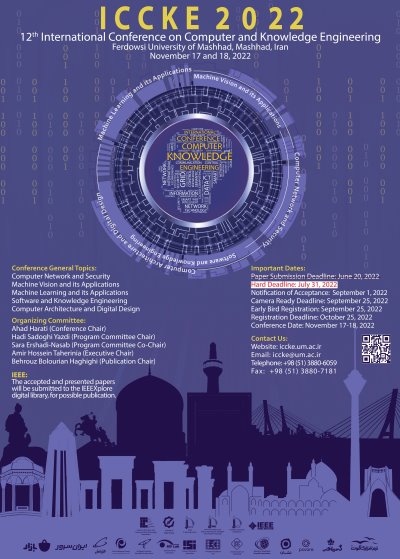0% Complete

Authors :
Keywords :
Abstract :
List of archived papers
Amir reza Kalantarnezhad - Javad Hamidzadeh
Mahdi Hematyar - Zeinab Movahedi
Hojat Asgarian Dehkordi - Hossein Kashiani - Amir Abbas Hamidi Imani - Shahriar Baradaran Shokouhi
Maryam Taghizadeh - Abdolah Chalechale
Mahdi Farhadi - Seyede Mahya Hazavei - Shahriar Baradaran Shokouhi
Mina Abroodi - Mohammad Reza Keyvanpour - Ghazaleh Kakavand Teimoory
Mahsa Zahedi - Mohammad Sediq Abazari Bozhgani - Abdorreza Savadi
Ali Yazdani - Hossein Simchi - Yasser Shekofteh
Amirhossein Tighkhorshid - Yasamin Borhani - Javad Khoramdel - Esmaeil Najafi
Mohammad Mehdi Samimi - Alireza Basiri




